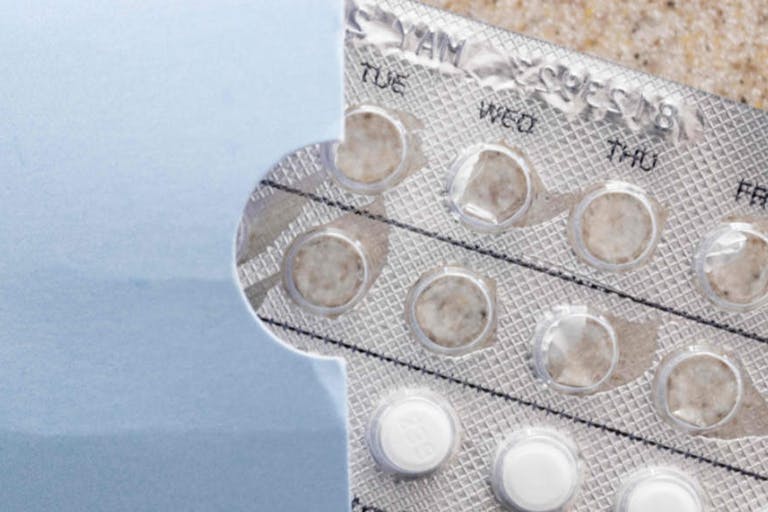
Abortions in New Jersey have risen since fall of 'Roe'
Cassy Cooke
·
Guest Column·By Michael J. New
Access to emergency contraception didn’t reduce the abortion rate, and the Opill won’t either
(National Review) In the Washington Examiner on Monday, Tiana Lowe Doescher responds to my NRO Corner post from Sunday. She argues that the FDA’s recent approval of Opill, an over-the-counter oral contraceptive, will succeed in reducing abortion rates. I appreciate Doescher’s diplomatic tone and her willingness to engage some of the studies I cited. That said, her analysis fails to persuade.
Doescher first takes issue with the 2018 Guttmacher Institute study that shows that over 50 percent of women seeking abortions were using some form of contraceptive the month they conceived. She argues that some couples will substitute Opill for less effective forms of contraception. However, it should be noted some women might stop using other oral contraceptives and start using Opill, which has a higher failure rate than hormonal contraceptives. It should also be noted that Opill will likely be used by teenagers and young women who would be less likely to maintain perfect usage, thereby increasing Opill’s failure rate.
Doescher then engages the 2002 Guttmacher study that shows that only 12 percent of abortion recipients who were not using contraception cited either cost or availability as a reason. She argues, from the reasons given for not using contraception, that roughly half of all women might have used contraception if it were more easily available. Here she misreads the study. It allowed women to cite multiple reasons why they were not using contraception, and so it is methodologically incorrect for Doescher to tally up percentages of the different reasons why women were not using contraception. Some women might have cited multiple reasons for not using contraception.
READ: No, over-the-counter birth control isn’t likely to reduce abortion rates
Again, even though this survey gave women the opportunity to cite multiple reasons for not using contraception, only 12 percent cited cost or availability as one of the reasons.
Finally, Doescher’s argument about the decline in the U.S. abortion rate after the Affordable Care Act’s contraceptive mandate took effect is unpersuasive. The Affordable Care Act was signed in March 2010 and started to take effect in 2011 and 2012. The U.S. abortion rate peaked in 1980 and started a steady decline afterward. The decline in the U.S. abortion rate between 2014 and 2017 was largely the continuation of this long-term trend. It is also worth noting that even though contraceptive use has increased since the early 1980s, the unintended-pregnancy rate in the United States has fluctuated since that time.
Skeptical readers should consider the research on emergency contraception. Theoretically, greater availability of emergency contraception could reduce unintended pregnancies and abortions. However, a body of research shows that, in practice, greater access to emergency contraception fails to result in reductions in either abortion rates or unintended-pregnancy rates. In fact, 23 studies published between 1998 and 2006 show that easier access to emergency contraception fails to achieve any statistically significant reduction in rates of either unintended pregnancy or abortion. Additionally, specific studies from Shanghai, Washington State, and Scotland all show that easier access to emergency contraception fails to significantly reduce either the abortion rate, the pregnancy rate, or the unintended-pregnancy rate
Overall, programs designed to promote contraceptive use have a very poor track record of reducing either abortion rates or unintended-pregnancy rates. Multiple media reports indicate that Opill will be available in convenience stores and grocery stores in early 2024. For this reason, I am confident that abortion data from 2024 and beyond will fail to show significant abortion declines among demographic groups that heavily used Opill and other over-the-counter contraceptives.
Editor’s Note: This article was originally published at National Review and is reprinted here with permission.
Live Action News is pro-life news and commentary from a pro-life perspective.
Contact editor@liveaction.org for questions, corrections, or if you are seeking permission to reprint any Live Action News content.
Guest Articles: To submit a guest article to Live Action News, email editor@liveaction.org with an attached Word document of 800-1000 words. Please also attach any photos relevant to your submission if applicable. If your submission is accepted for publication, you will be notified within three weeks. Guest articles are not compensated (see our Open License Agreement). Thank you for your interest in Live Action News!

Cassy Cooke
·
Guest Column
Michael J. New
·
Guest Column
Melina Nicole
·
Guest Column
Wesley J. Smith
·
Politics
Rebecca Oas, Ph.D.
·
Politics
Calvin Freiburger
·
Guest Column
Michael J. New
·
Issues
Michael J. New
·
Guest Column
Michael J. New
·
Guest Column
Michael J. New
·
Guest Column
Michael J. New
·